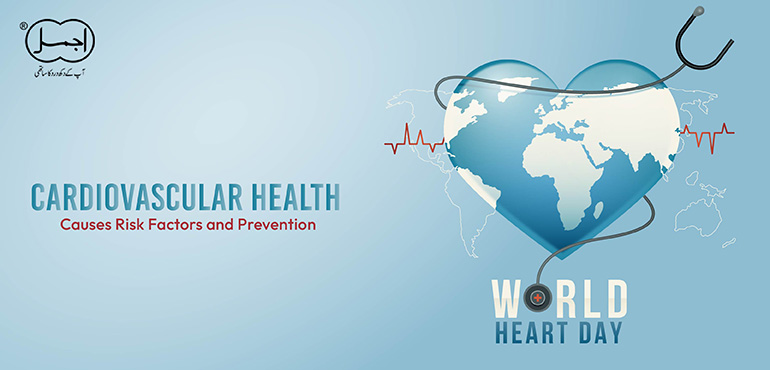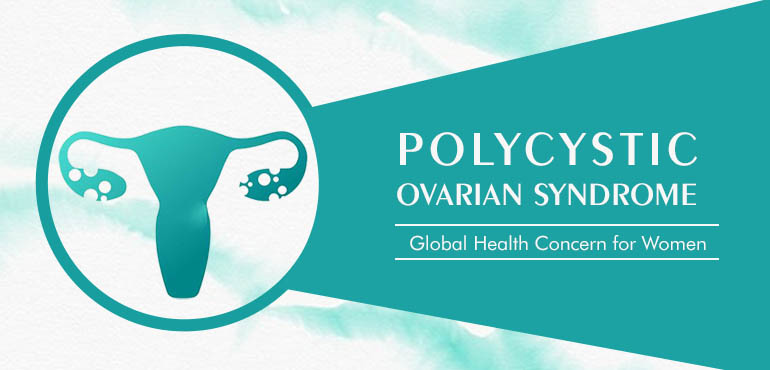Signs and Symptoms
Winter Blues With Unani Medicine The prevalence of seasonal affective disorder is higher in winter and its symptoms usually resolve around spring. Usually, greater and more severe symptoms are observed in women as compared to men. These symptoms are mild at the start but increase in intensity as the season progresses. They are similar to the symptoms of depressive disorders and may include:
- Persistent low mood
- Low energy and chronic fatigue
- Loss of will to participate in usual activities
- Hypersomnia (Sleeping more than usual)
- Difficulty getting out of bed
- Feeling worthless and hopeless
- Low concentration
Without seeking proper help, these symptoms may become more severe and can lead to suicidal thoughts (NHS.UK, 2021).
Risk Factors
There are certain people that are more likely to develop depressive episodes in winter. Factors linked to a greater occurrence of seasonal affective disorder include:
Gender
Women are four times more likely than men to develop SAD. The symptoms in women also tend to be more intense than in men.
Geographical Distribution
SAD is more prevalent in people that live further away from the equator. This may be attributed to the fact that areas closer to the poles are colder and bear extreme changes in the weather.
History of Mental Health Issues
Those people that are already diagnosed with mental health disorders, especially depression or bipolar disorders tend to have greater chances of developing SAD than the rest of the community.
Family History
Having an immediate family member with these mental health issues increases the chances of the onset of SAD as depression and seasonal depression run in the family (Melrose, 2015).
Causes of SAD
To determine the causes of seasonal affective disorder, researchers have focused on the physiological and metabolic pathways that alter the psychological systems of the body. The most common observation is that patients with SAD have low or no exposure to sunlight.
When sunlight hit the skin it stimulates the production pathway for vitamin D, which in turn activates serotonin ‘the happy hormone’ (Patrick and Ames, 2015). The lack of sunlight decreases serotonin levels causing feelings of sadness, irritation and gloominess (McMahon et al., 2014).
Winter brings shorter days and longer nights, prompting changes in the biological clock of humans. Melatonin is a hormone that regulates the sleep cycle and its production is triggered by night or dark. In winter, as the sun sets faster overproduction of melatonin may occur. Serotonin is converted into melatonin and with the extra synthesis of melatonin little serotonin is left to perform its function. The imbalance of these two hormones results in an irregular circadian cycle manifested in sleepiness, sadness, and fatigue (Lewy et al., 2006).
SAD through Unani Practices
Mental health issue is not a new subject in Unani practice. Hippocrates first introduced the notion of temperaments and the humour of the body. The temperament of the brain (Mizaj-e-Dimagh) is defined as cold and wet which makes it vulnerable to various stimuli. The brain is interconnected in such a way that damage to any part is easily transferred to the rest of the brain. Unani practitioners believe that individuals with particular temperaments are more susceptible to depressive episodes. The four different types of temperaments (Mizaj) are as follows:
Sanguine Temperament (Damwi Mizaj)
It is also called the ‘muscular’ temperament and these individuals have hot and wet nature. They are active, confident, and rarely anxious.
Phlegmatic Temperament (Balghami Mizaj)
It is also called the ‘lymphatic’ temperament. These individuals are cold and wet in nature. They are usually slow, sluggish and prone to obesity.
Choleric Temperament (Safrawi Mizaj)
It is also called the ‘nervous’ temperament and is hot and dry in nature. These people are passionate and quick to anger due to which they are susceptible to various brain and nervous disorders.
Melancholic Temperament (Saudawi Mizaj)
This temperament is cold and dry in nature. These individuals are prone to sadness, gloominess, and depression (nhp.gov.in, n.d.). Although depressive episodes are seen in all four of these temperaments, individuals with melancholic temperaments are said to be more vulnerable to major depressive disorder, seasonal affective disorder, and mood swings (Fatma and Aadam, 2019). Determining the temperament of the patients will help in the prevention and early diagnosis of the patients.
5 Ways to beat the winter blues
A common misconception of Unani medicine is that it depends on herbs for the treatment of depression and anxiety. In reality, expert Unani physicians treat the cause of ‘blues’ and focus on providing emotional stability to the patients. These therapeutic measures may include psychotherapy, dietary therapy (Ilaj Bil Giza) and regimental therapy (Ilaj Bil Tadbeer).

1. Therapy based on Temperament (Mizaj)
Unani treatment for mental health focuses on Mizaj-based treatments. As discussed above, individuals with melancholic temperament are more prone towards depressive disorders. A few guidelines by Unani scholars for individuals in this temperament are:
- Avoid dry and cold climates, and keep yourself warm
- Consume 2-3 litres of water for hydration and appropriately moisturize skin
- Avoid dry, stale, and old food and restrict beans, nuts, tomatoes, and eggplants
- Avoid tea, coffee, and artificially flavoured drinks
- Moderate and light exercise is also beneficial, especially after dinner
- Sleep for 6-8 hours each night, including a short nap after lunch
These guidelines can improve the emotional and spiritual health of the people classified in this group.
2.Dietary Treatment (Ilaj Bil Ghiza)
Unani therapy for depression also includes diet management (Ilaj Bil Ghiza) in patients with depressive symptoms. Diet, sleep and exercise play a vital role in the aetiology, management, and treatment of the seasonal affective disorder.
For the natural treatment of depression, the Unani scholars emphasize the three following diets:
Eliminative Diet
This diet consists solely of liquid materials like juices, soups and coconut water.
Soothing Diet
A soothing diet only contains fruits, salads, and steamed/boiled vegetables
Constructive Diet
A constructive diet contains wholesome foods like unpolished rice and whole grains (Zaman, Noorul Basar and Farah, n.d.).
Diets that are too sweet and high in sugar should be avoided. Trials have shown that individuals who consume sweetened beverages have a 5% higher risk of developing depression (Hu, Cheng and Jiang, 2019).
Unani practices are based on the intake of fresh fruits, vegetables, whole grains like lentils and pulses, lean meat like eggs, chicken, fish, and the restriction of red meat like mutton and beef. These recommendations are based on the trials that show the high occurrence of depression in the population that is consuming large amounts of processed foods (Lane et al., 2022).
3. Get yourself moving (Riyazat)
Exercise (Riyazat) is defined as the movement of the body either to complete everyday functions or for physical fitness.
Unani medicine is classified into two groups:
Riyazat Arziya
It is also called incidental or involuntary exercise and is characterised as the bodily movement done to perform day-to-day functions.
Riyazat Zatiya
It is called purposeful or voluntary exercise and is defined as the physical activity performed to increase the physical fitness of the body (Farooqui et al., 2020). Exercise warms up the body by increasing its temperature which ultimately lifts the mood. In regular and non-regular exercisers enhanced mood has been observed after a period of physical activity (Hoffman and Hoffman, 2008).
The improved mood after exercise is referred to as ‘the runner’s high’ and is associated with the release of endorphins. Endorphins are feel-good hormones, that are secreted when the body is under stress, to relieve pain and increase the sense of well-being. In clinical trials, those participants that began to refrain from exercise also lost the progress they made during the rehabilitation program (Schuch and Stubbs, 2019).
A few benefits of Riyazat other than the decline in the intensity of depressive episodes are:
- Improves metabolism (istehala) for the proper functioning of the body
- Removal of waste products from the body
- Boosts immunity of the body
- Better muscle coordination and balance of the body
- Delay and manage the onset of chronic illnesses and degenerative diseases
Natural treatment for depression includes incorporating meditative exercises like deep breathing (pranayama), yoga, and self-reflection as a rehabilitation process.
4. Light Therapy
Seasonal affective disorder is said to be more prevalent in populations with less sunshine. The Unani scholars have incorporated light therapy for managing recurring episodes of depression in the winter season.
Any of the following methods may be included in these therapy sessions:
- Sunbathing on the roof/terrace of the house between the hours of 10.00 AM-3.00 PM
- Using light boxes that produce a large amount of light with little to no ultraviolet rays. Light boxes should be used in the morning for 20-30 minutes.
(Mayo Clinic, 2016)
5.Herbal Supplementation
Natural treatment of depression (SAD), also includes the use of herbs and herbal products that have been clinically tested for depression (Amraz-e-Nafsaniya). A few of the most efficient products are discussed here:
Sharbat Ahmed Shah
It is a polyherbal formulation that has been used for the treatment of melancholia (Malankholia). A single dose of Sharbat Ahmed Shah is 25-35ml in 125ml of water or hot milk/tea in winter.
A few of its ingredients that possess anti-depressant properties are:
- Halela Siyah (Terminalia chebula Retz.)
- Gul-e-Surkh (Rosa damascena Mill.)
- Badranjboya (Nepeta hindostana Roth.)
(Khan et al., 2019)
Sharbat Ahmed Shah causes an increase in tryptophan, the precursor of the serotonin hormone. The presence of serotonin ‘happy hormone’ produces the feeling of happiness, improves memory and enhances mood.

Khamira Gaozaban
Khameera Gaozaban is a herbal formula used for the treatment of neurological disorders (Amraz-e-Nafsani). It is a tonic for the brain which strengthens the nerves and enhances memory. Tukhme Balanga (Lallemantia royleana Benth) is the ingredient of Gaozaban that possesses anti-depressant properties. It was found that Gaozaban has the same efficacy as that diazepam (a commercial anti-depressant) when it comes to combating depressive episodes (Ishaq, 2014).

Arq Sheer Marakab
Another potent Unani formulation Arq Sheer Marakab, has been previously used for the treatment of melancholia. It is now, a renowned herbal product for major depressive disorder, seasonal affective disorder and anxiety. It should be consumed in the morning to keep the spirits high throughout the day.

Zafran
Saffron or Zafran is a spice derived from the flower of Crocus sativus plant. Saffron has been used as a safe, non-addictive, and economical alternative to commercial drugs. Saffron has been tested against a variety of anti-depressants and has demonstrated similar properties as imipramine and citalopram (Shafiee et al., 2018).
For seasonal affective disorder (SAD), the patients are recommended to consume 20-30mg/day of saffron mixed in warm tea, milk or coffee.
In a nutshell, winter blues are associated with low quality of life, poor dietary choices, and a lack of physical activity. Getting fresh air, going out of the house, and socializing with friends improve emotional health. In addition to that, consuming food low in sugar and exercising every day can also improve physiological faculties that affect the psychology of vulnerable people. Unani medicine is famous for its herbal mixtures and does not disappoint when it comes to treating patients with depression.
Take a look at our herbal formulations for winter blues and more at our website:
Bibliography
- Sajjad, S. (n.d.). Environmental based study on seasonal variations of mood and behavior.
- NHS.UK. (2021). Symptoms – Seasonal affective disorder (SAD).
- Melrose, S. (2015). Seasonal Affective Disorder: An Overview of Assessment and Treatment Approaches. Depression Research and Treatment,2015, pp.1–6.
- Patrick, R.P. and Ames, B.N. (2015). Vitamin D and the omega-3 fatty acids control serotonin synthesis and action, part 2: relevance for ADHD, bipolar disorder, schizophrenia, and impulsive behavior. The FASEB Journal, 29(6), pp.2207–2222.
- McMahon, B., Andersen, S.B., Madsen, M.K., Hjordt, L.V., Hageman, I., Dam, H., Svarer, C., Da Cunha-Bang, S., Barré, W., Madsen, J., Hasholt, L., Frokjaer, V. and Knudsen, G.M. (2014). P.1.i.037 Patients with seasonal affective disorder show seasonal fluctuations in their cerebral serotonin transporter binding. European Neuropsychopharmacology, 24, p.S319.
- Lewy, A.J., Lefler, B.J., Emens, J.S. and Bauer, V.K. (2006). The circadian basis of winter depression. Proceedings of the National Academy of Sciences, 103(19), pp.7414–7419.
- Concept of Temperament (Mizaj) and its Assessment in Unani System of Medicine | National Health Portal of India.
- Fatma, D.S. and Aadam, D. (2019). An overview of concept of depression in Unani medicine and efficacy of Riyazat (exercise) in its management. International Journal of Physiology, Nutrition and Physical Education, 4(1), pp.1473–1476.
- Zaman, R., Noorul Basar, S. and Farah, S. (n.d.). INTERNATIONAL JOURNAL OF PHARMACEUTICAL, CHEMICAL AND BIOLOGICAL SCIENCES DIETO THERAPY IN UNANI SYSTEM OF MEDICINE. IJPCBS, 2013(4), pp.1035–1039.
- Hu, D., Cheng, L. and Jiang, W. (2019). Sugar-sweetened beverages consumption and the risk of depression: A meta-analysis of observational studies. Journal of Affective Disorders, 245, pp.348–355.
- Lane, M.M., Gamage, E., Travica, N., Dissanayaka, T., Ashtree, D.N., Gauci, S., Lotfaliany, M., O’Neil, A., Jacka, F.N. and Marx, W. (2022). Ultra-Processed Food Consumption and Mental Health: A Systematic Review and Meta-Analysis of Observational Studies. Nutrients, 14(13), p.2568.
- Farooqui, Y., Siddiqui, M.Y., Zehra, A. and Zafar, M. (2020). Role of Riyazat in prevention and control of lifestyle diseases: A review. Journal of Drug Delivery and Therapeutics, 10(1-s), pp.211–214.
- Hoffman, M.D. and Hoffman, D.R. (2008). Exercisers Achieve Greater Acute Exercise-Induced Mood Enhancement Than Nonexercisers. Archives of Physical Medicine and Rehabilitation, 89(2), pp.358–363.
- Schuch, F.B. and Stubbs, B. (2019). The Role of Exercise in Preventing and Treating Depression. Current Sports Medicine Reports, 18(8), pp.299–304.
- Mayo Clinic. (2016). Seasonal affective disorder treatment: Choosing a light therapy box.
- Khan, A., Siddiqui, A., Jafri, M.A. and Asif, M. (2019). Sharbat Ahmad Shahi A Potent Unani Formulation for Mood Disorders. International Journal of Scientific Research in Biological Sciences, 5(6), pp.202–211.
- Ishaq, H. (2014). Anxiolytic effect of herbal medicine, Khamira Gaozaban Ambri Jadwar Ood Salib Wala (KGJ) in experimental rat models. Pakistan Journal of Pharmaceutical Sciences, [online] 27(2), pp.289–294.
Shafiee, M., Arekhi, S., Omranzadeh, A. and Sahebkar, A. (2018). Saffron in the treatment of depression, anxiety and other mental disorders: Current evidence and potential mechanisms of action. Journal of Affective Disorders, 227, pp.330–337.




